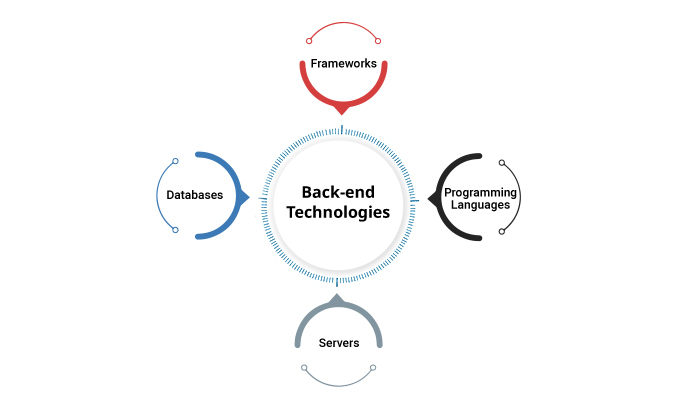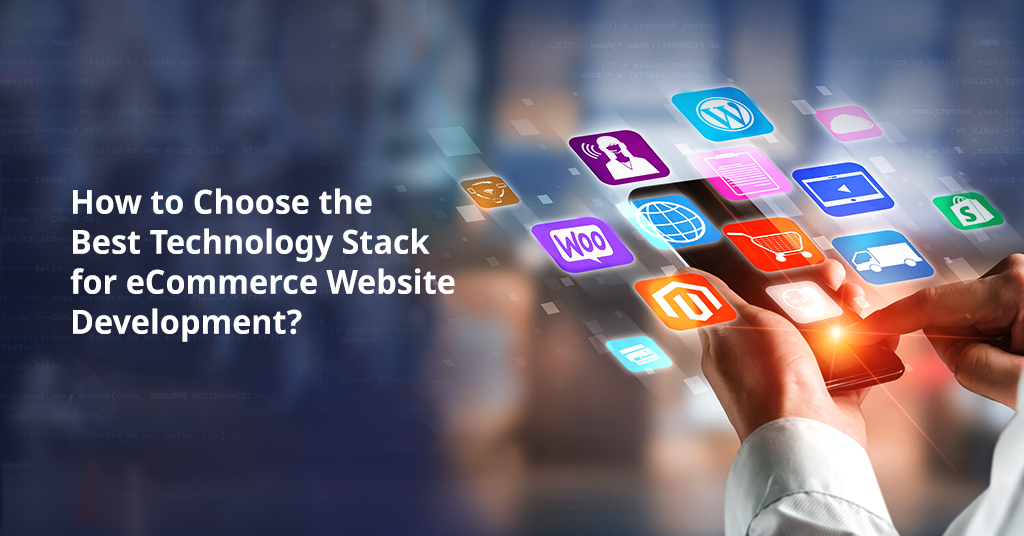Competition is widespread in today’s world, especially online. Frankly, it takes a lot to make an impact in a market where there are 24 million or more eCommerce websites competing for customer attention.
Providing a thoughtfully planned and unique user experience thus becomes essential for any business. In addition, you as a business leader must ensure that the technology you choose supports your business’s long-term expansion and sustainability. Most likely, if you are a non-tech founder, selecting a technology stack for eCommerce website development will likely cost you many hours and countless questions like:
- How trustworthy is the tech stack?
- Does it support the quick loading times required for an eCommerce website?
- Is it scalable?
This blog will discuss the fundamentals of building a robust tech stack for eCommerce website development. But first, it’s important to understand exactly what a tech stack is.
What is a Tech Stack?
A tech stack is a group of programming languages, platforms, libraries, frameworks, tools, and other resources used to build a website or an innovative solution. A fully functional website is made up of many different tools and technologies; however, tech stacks can be roughly split into two main categories:
#1. Front-end technologies
As the name implies, the front end is the user interface that users view and use. For any eCommerce store, it’s essential to guarantee responsiveness across devices, quick loading, and an easy-to-use interface. Choosing a front-end stack nearly always entails selecting one of the following:
- HTML: The structure of a web page is provided by the Hypertext Markup Language (HTML), which also instructs browsers on how to interpret various elements such as headings, links, lists, images, etc.
- CSS: The elements on your eCommerce website, including shapes, sizes, colors, and typefaces, are styled and positioned using Cascading Style Sheet (CSS).
- JavaScript: JavaScript is a popular programming language for adding interactivity to static HTML websites. According to Statista, JavaScript continues to be the most widely used and popular technology for development, with 67.7% of all usage. JavaScript offers capabilities for animation and interactive features. It also includes tools and frameworks that let you carry out operations less explicitly.
- Popular JS libraries & frameworks: jQuery, React.js, Vue.JS, Angular, Node.js, and many more.
#2. Backend technologies
The backend, which houses the technologies that power your front end, may not be as visible to end users as the front end, but it’s equally important. Order management, catalog product addition , SEO, website page editing, online store scaling, user registration are all handled by the back-end of an eCommerce website. The entire eCommerce website won’t work if the back-end is built incorrectly. Backend technologies allow stack developers to store and access the data and build sophisticated logic that makes your website dynamic. Other aspects of backend stacks that are crucial include:

Programming language: The functionality of a website is shaped by programming languages. The decision is based on the project’s requirements and objectives. Examples of major programming languages for eCommerce website development include:
- C#
- PHP
- Python
- Ruby
Frameworks: Frameworks assist developers in automating repetitive tasks to reduce the time required for development. The development process is quicker and more straightforward with frameworks like:
- Django
- Laravel
- Flask
- Express.js
- Next.js
Servers: You will require backend servers to handle client requests in order to control the traffic of communication exchanges efficiently. Some popular servers include:
- Apache
- Nginx
- IIS
Databases: A large amount of data includes dates, information about purchases, databases, etc. Analyzing this data is crucial. Databases quickly provide the resources required for storing data and executing search database requests. Some popular databases include:
- MySQL
- MongoDB
- DynamoDB
- PostgreSQL
However, it’s worth noting that several factors frequently influence these selections. This includes the operating system (OS) used and the type of web hosting required.
Top eCommerce platforms
New eCommerce platforms offer a tailored customer experience and striking design to exceed customer expectations. Additionally, eCommerce platforms incorporate front-end, back-end, and third-party integration technologies. These eCommerce solutions make it simple to manage inventories by using a single view across several sales channels and manage orders using a unified approach.
Examples of top eCommerce platforms include:
- BigCommerce: BigCommerce is a cutting-edge eCommerce platform that offers hosting and services designed for creating an online store. BigCommerce is an excellent option for beginners to create an eCommerce website. However, the chance for customization is also reduced, as is the site-building efforts.
- Magento: With the help of the robust open-source eCommerce platform Magento, businesses can quickly create and maintain their online storefronts. Magento allows businesses of all sizes to advance their online sales because of its comprehensive functionalities, scalability, and customizable templates.
- WooCommerce: The ease of use and accessibility of WooCommerce are two major reasons for its popularity. WooCommerce has more than 23 customizable design themes. The platform has a wide range of extensions that allow you to customize your website to meet your exact business requirements. Additionally, the WooCommerce platform allows you to scale your online store effectively with little to no hassle. WooCommerce hosting is also easily accessible so you can improve your store’s overall efficiency.
- Shopify: Shopify is an eCommerce platform for building online stores that focuses on giving users a user-friendly admin panel. With Shopify, you get an intuitive admin interface and the services you need for eCommerce website development.
How to choose the right tech stack for eCommerce website development?
Building an eCommerce website can be exciting if you have access to commonly available technology. However, it can be difficult when there are so many options available. There are several factors to consider when building your eCommerce technology stack. Here are some crucial aspects to remember before choosing the ideal tech stack for your eCommerce website.
#1. Clear your requirements
It can be tempting to use the newest and most popular technology in the hopes that it will immediately fix all your issues. However, be sure to avoid paying for any functionality you don’t need or software that doesn’t address your main points. First, consider your overall business plan. Prioritize your needs, and then use those needs as a guide for selecting the appropriate technology. Otherwise, consulting with an eCommerce web development company will be beneficial.
#2. Time-to-Market
Time-to-Market is yet another factor to consider when choosing eCommerce technologies. LAMP (Linux, Apache, MySQL, and PHP) stacks are typically recommended over alternative stacks if your eCommerce web development team is accustomed to PHP and if you are seriously considering the time-to-market factor.
#3. Define project scope
A one-page website can’t have the same solution as a massive eCommerce platform with dozens of product lines. Your project’s size and scope will also influence your chosen tech stack. For example, Python-Django or Node.js stacks are often more beneficial for small projects. Alternatively, MEAN (MongoDB, Express.js, AngularJS (or Angular), and Node.js) or LAMP stacks are more practical for medium-sized projects. On the other hand, large projects with complex requirements are likely to use Angular, Node.js, or ROR stacks.
#4. Check scalability and security
It’s crucial to determine whether a stack will be able to provide scalability without requiring significant time. Strong programming languages like Java and others are excellent alternatives for achieving robust scalability because they offer a variety of customizations. Additionally, you cannot afford to compromise security if you manage an eCommerce website that handles sensitive data such as customer credit card details. Therefore, it is always critical to select tools that offer a high level of security.
To sum up
As we already stated, your business and its goals are distinctive, so it makes sense that your eCommerce technology will also be. Additionally, it may involve some trial and error. It’s usually a good idea to try out possible alternatives before committing to them. The most important points are a clear understanding of goals, endpoints, and the timeframe. Before selecting your technologies, consider speaking with an expert eCommerce web development company. This will help give you an idea of which types of stacks or technologies are the best fit for your needs.
We hope that our blog has helped you make the best choices for launching a cutting-edge and highly effective eCommerce website. If you have any other questions, please don’t hesitate to contact us. We would love to assist you!
Next Steps
- We are a leading eCommerce web development company with 15+ years of experience in all leading technologies.
- Email us at sales@analytix.com or call us at 781.503.9003 today.
- Follow our blog for industry trends and the latest updates.
- Engage with us on LinkedIn and Twitter
